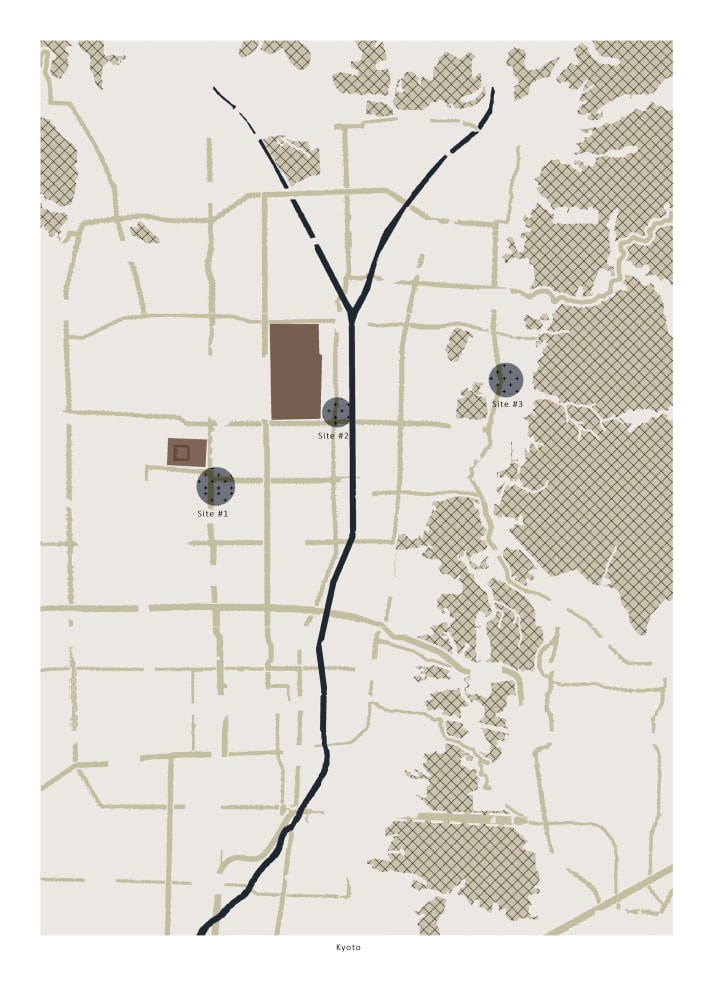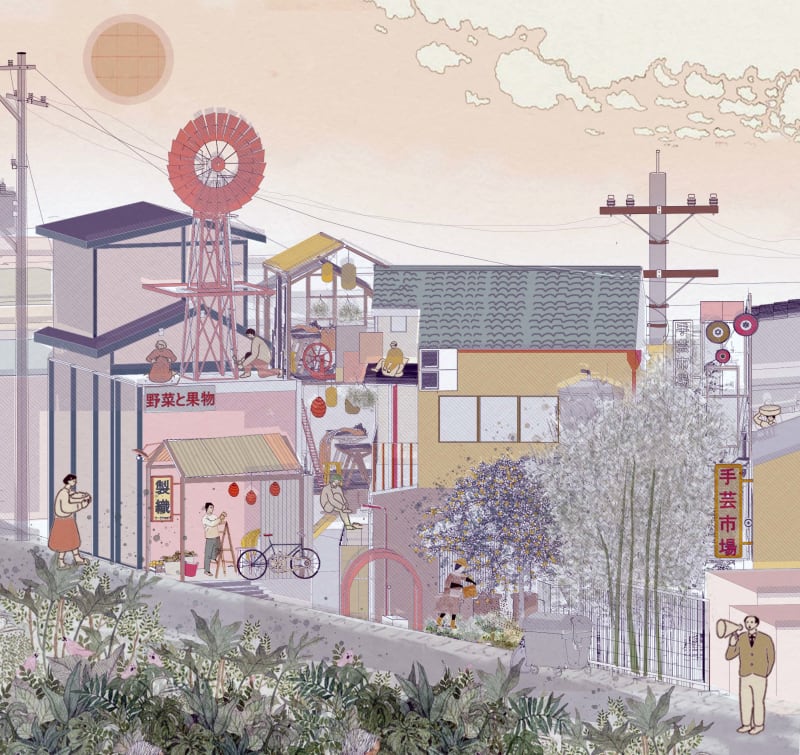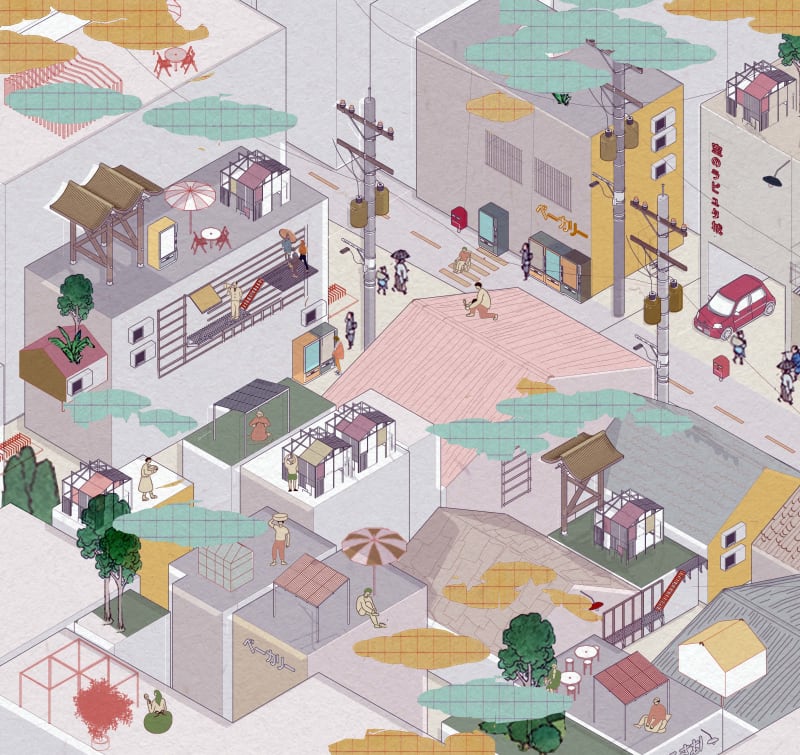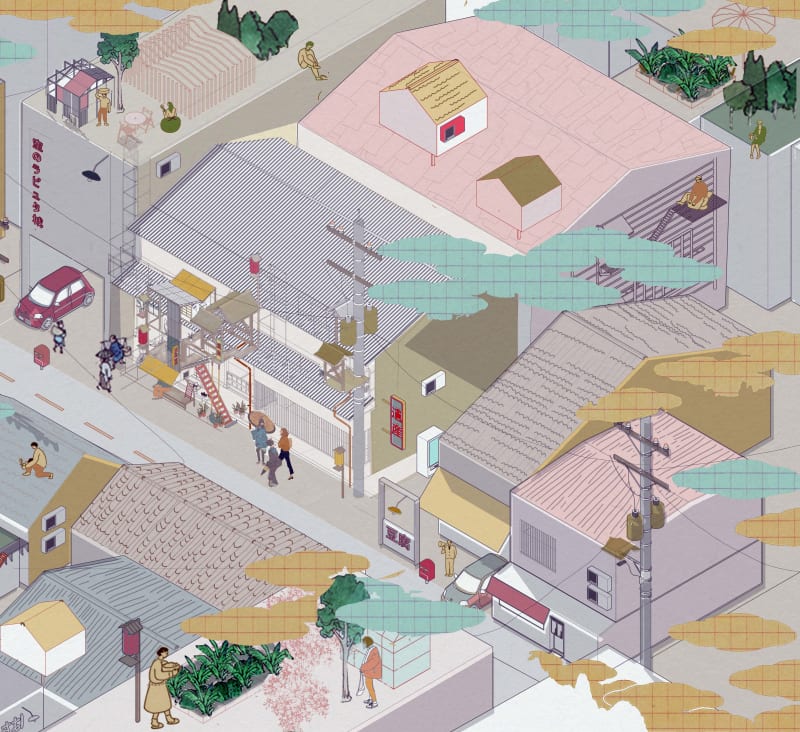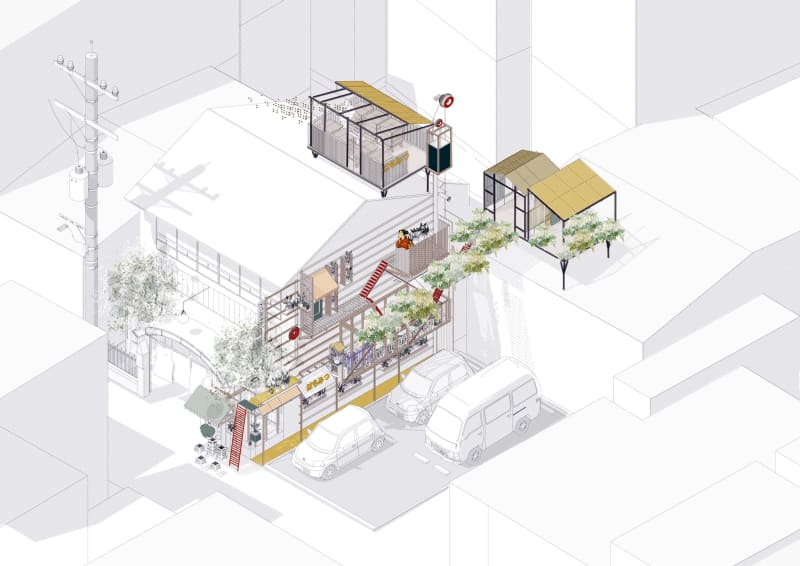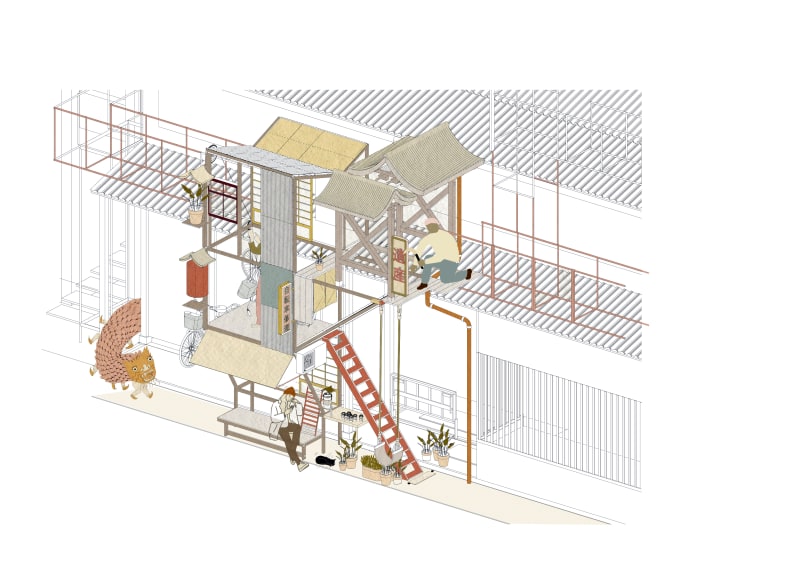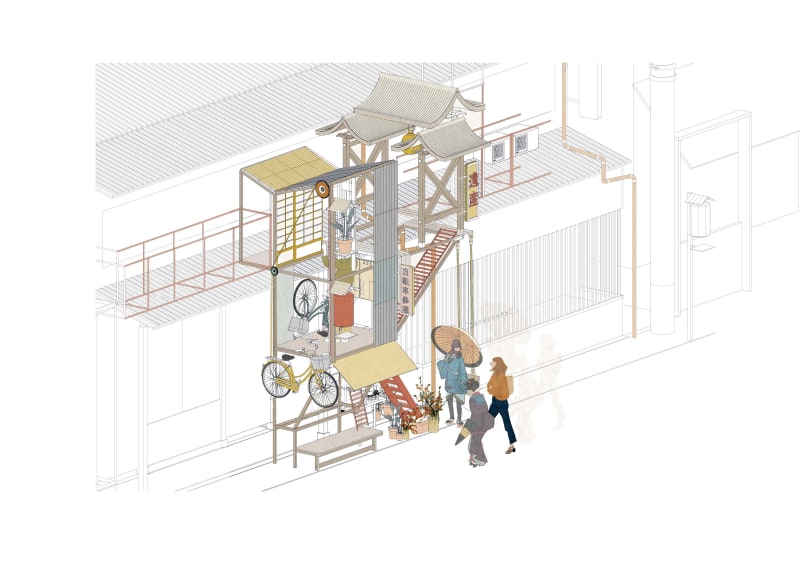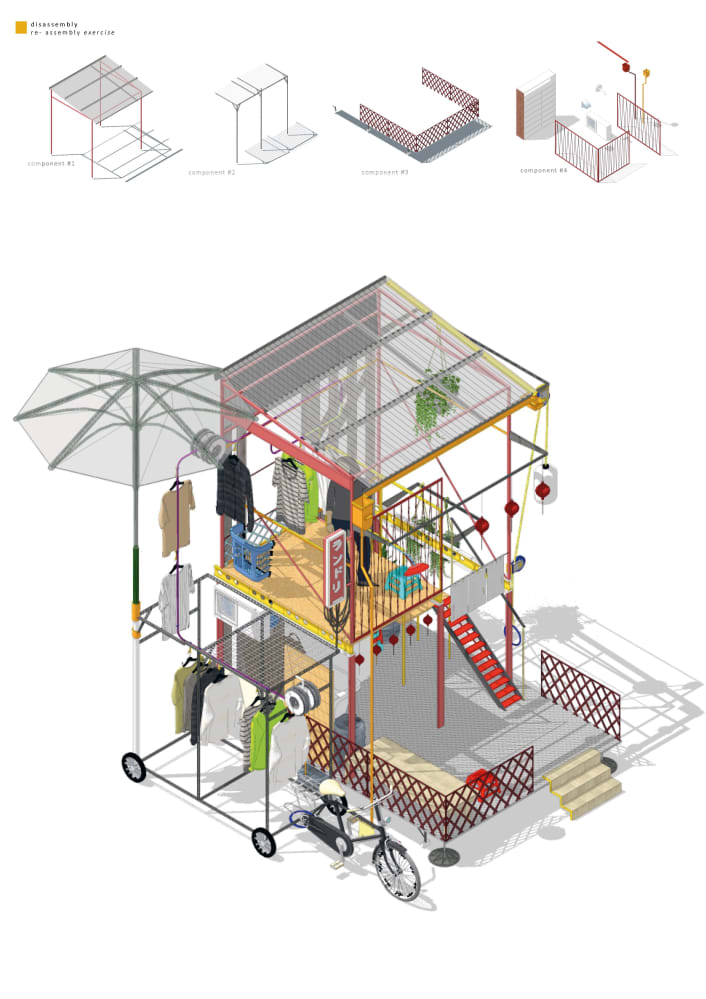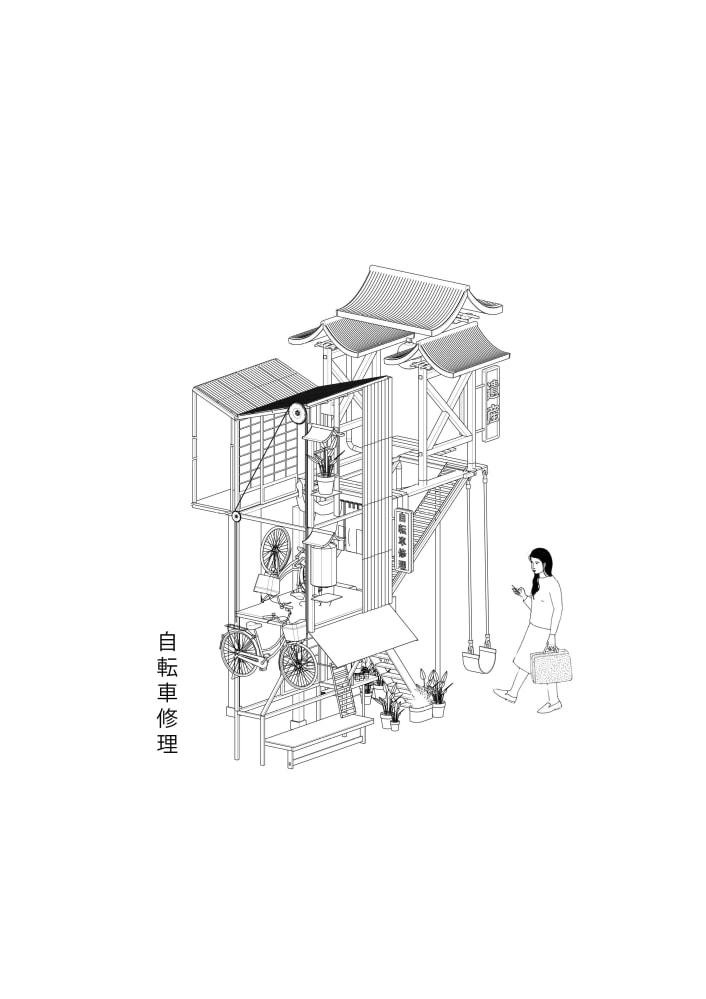How can the participatory architecture in underused sites of Kyoto, bring new notion to the oriental street and its’ communities in a contemporary context?
Karina Kuznecova
The thesis sought to investigate model, where skills and knowledge of professionals and users come together; those are exchanged, shared and evolved by any participant of the mechanism. This mechanism would also include a library of recycled materials and underused/odd/shallow sites of Kyoto for projects to be constructed.
The idea appeared due to personal observation of the architectural profession and its separation from the making process. In the 20th century Europe witnessed the shift towards architecture as commodity rather than cultural asset – the shift from architect working with materials to specifying products.
Tremendously influenced by R.Sennet’s ‘Craftsmen’, J.Pallasmaas’s ‘Thinking hands’ and C. Alexander’s ‘Pattern language’ to name the few. I started the research by observing user design patterns in order to understand, estimate and speculate the participation factor for the mechanism.
In Japan, those observations are particularly interesting due to the nature of its DIY approach and strong respect for traditions.
My intention is to develop a model which I can apply in a Western context. To explore what kind of architect I want to be, and as important, what kind of architect I can be in the context of climate change.
Methodology
- Observing user patterns & Extracted components & Repurposing
- Shallow underused sites
- Inhabitation with a useful function
- Mapping the craft skills on a neighbourhood scale

